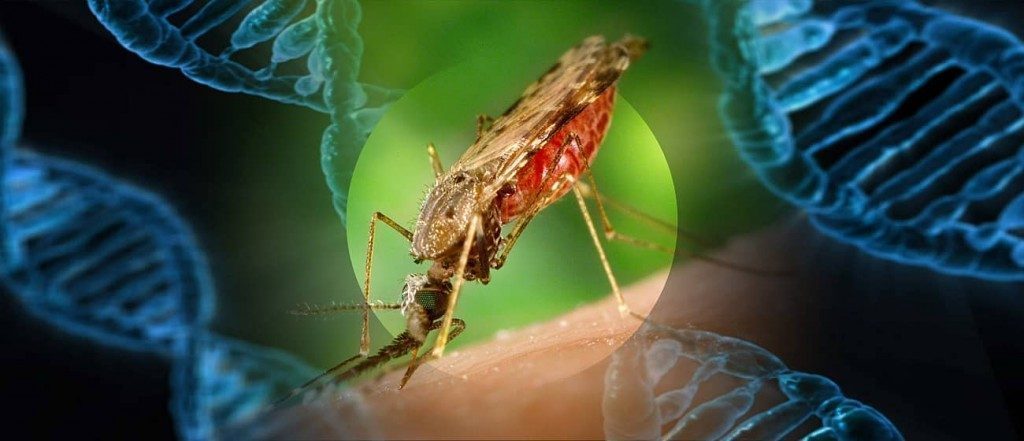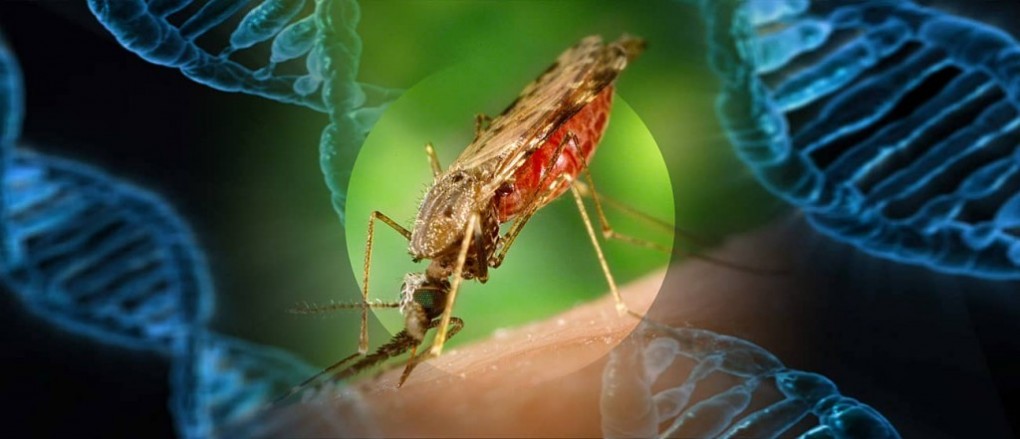Yale Study: Wild Mosquitoes Retained Genes Of Genetically Modified Mosquitoes
 By Aaron Kesel
By Aaron Kesel
In Brazil a genetic engineering test of mosquitoes appears to have failed, with genes from the mutant mosquitoes now mixing with the native population, Nature reported. This comes as mad scientists in the U.S. are finding they are getting bitten back by messing with nature after running their own program to genetically modify mosquitoes.
The experiment involved a company called Oxitec which took male Aedes aegypti mosquitoes and genetically engineered them to have a dominant lethal gene. The idea was first proposed in 2016, according to an article by Science Magazine that discussed the plans to release the GM insects.
According to the hypothesis when the genetically modified mosquitoes mated with wild female mosquitoes, the gene was supposed to drastically cut down the number of offspring they produced. Further, the few that were born should have been too weak to survive a long period of time.
A team of Yale students then studied the genomes of both the GM strain and the wild species before the release, then again six, 12 and 27 to 30 months after the release began.
Widget not in any sidebars
Around 450,000 modified males were released in Jacobina, Brazil every week for 27 months straight, totaling tens of millions, according to the Yale study.
Sure enough, by the end of the test there was clear evidence that genes from the transgenic insects had been incorporated into the wild population. Although the GM mosquitoes only produce offspring about three to four percent of the time, it seems that those that are born aren’t as weak as expected. Some appear to make it to adulthood and breed themselves.
In theory, if the experiment worked it would have cut down the population of mosquitoes in an area estimated up to as much as 85 percent. This of course if successful would translate to fewer bug-borne diseases, like — dengue, yellow fever, Zika, and malaria in humans and animals alike.
However, that’s not what the final results were according to Yale University. Yale explains that some of the native bugs, they found, had surprisingly retained genes from the engineered mosquitoes; and even worse, the experiments made them more resilient.
According to New Atlas there are now three different strains of mosquitoes mixed together in Jacobina and other places of Brazil.
The bugs in the area are now made up of three strains mixed together: the original Brazilian locals, plus strains from Cuba and Mexico – the two strains crossed to make the GM insects. This wider gene pool could make the mozzies more robust as a whole.
“The claim was that genes from the release strain would not get into the general population because offspring would die,’’ Jeffrey Powell, senior author of the study said. “That obviously was not what happened.”
Other researchers released genetically modified (GM) mosquitoes in a controlled environment, into a high-security laboratory in Terni, Italy earlier this year, NPR reported.
Another research firm called Target Malaria research consortium also released 6,400 GM mosquitoes in West Africa, Burkina Faso, this year, which was condemned by the Civil Society, a group of organizations. The tests were funded by organisations linked to the Gates Foundation, Facebook, and – indirectly – the Pentagon, as part of a project to eradicate malaria, The Guardian reported.
The release of GM mosquitoes in the village was an unethical experiment, as Target Malaria acknowledges that there are no direct benefits to the local population of this particular GM mosquito release, in terms of malaria control. This was not an early stage trial of the GM mosquitoes intended to be tested later for their impact on malaria, but a release of an entirely different GM mosquito.
Thus, there was no justification for making the releases. According to the World Medical Association’s Declaration of Helsinki, which is based on the Nuremberg Code and outlines the internationally agreed ethical principles for medical research involving human subjects, such research “may only be conducted if the importance of the objective outweighs the risks and burdens to the research subjects” (Article 16).
Indeed, the release of the GM mosquito in Burkina Faso poses risks, including the incidental release of some biting female GM mosquitoes during the experiments. While Target Malaria claims that the number will be small, nevertheless, since GM female mosquitoes can bite humans and spread disease, the release of biting females still poses some risk to local people.[ii]
Yale’s study is especially alarming because here in the U.S. the same company Oxitec was approved in the U.S. by the Food Drug Administration (FDA) in 2016, to genetically modify mosquitoes to fight against the Zika virus. This trial allowed the release of mosquitoes in the state of Florida for testing purposes in Key Haven, Monroe County.
Oxitec also obtained funding from the Bill & Melinda Gates Foundation to develop the GM insects. It’s worth noting that Bill Gates has said just this year that “mosquitoes are the number one killer.”
Gates also released a swarm of mosquitoes on an unsuspecting audience at a TED conference in 2009 to prove a point.
But Oxitec’s experiments don’t end in the U.S. and Brazil, the lab was also approved to release its hellish X-Files like mosquitoes in France and the Netherlands in 2017.
Christoph Then for TestBiotech commented about the study stating,
The Oxitec trials have led to a situation that is largely out of control. The company has released its patented insects although it was known before that some insects could survive in the environment. The expectations of their investors were more important than the protection of health and the environment. There is no insurance and no fast-track mechanism to prevent severe damage in a worst-case scenario.
This incident must have consequences for further applications of genetic engineering. Preventing the spread of genetically engineered organisms within natural populations has to become a priority.
Florida isn’t the only state that we may have to worry about releasing GM mosquitoes. In 2017 it was reported that the EPA officially registered another company named MosquitoMate’s Asian Tiger mosquito with a five-year license to sell their lab mosquitoes in as many as 20 states, Nature reported.
In 2017, that same year, the U.S. Center for Disease Control and Prevention reported that mosquitoes carrying disease could invade as much as 75% of America in a paper published in the Journal of Medical Entomology. Last year, the CDC stated that the number of illnesses caused by mosquito, tick, and flea bites has tripled in the United States over the last 13 years, CBS reported.
It’s of particular interest to express that a mosquito-borne virus that causes brain swelling and can be fatal in humans was recently detected in Florida, according to the Florida Department of Health in Orange County. It may be a coincidence, but the research by Yale indicates that it may not be, but this was after Florida released GM mosquitoes in 2017-2018.
After being bitten by an infected mosquito, it takes four to 10 days to develop symptoms of the Eastern Equine Encephalitis virus, according to the Centers for Disease Control and Prevention (CDC). In severe cases involving brain inflammation, symptoms start with the sudden onset of headache, high fever, chills, and vomiting. The infection can then progress, causing disorientation, seizures, and coma, Yahoo News reported.
If that’s not enough, in 2018, the first reported mosquito-borne disease called the Keystone virus was thought only to be transmitted to animals, but jumped to infect humans according to doctors.
Where there have been negative results, there have also been positive results achieved by researchers at London’s Imperial College using “gene drive” technology to successfully eradicate a whole population of malaria-carrying mosquitoes in their lab by making the insects infertile.
However, as Hellen Wallace wrote in Scientific American in 2011, “the release of genetically modified (GM) insects should follow a precautionary approach, because what appears well understood in the lab can have unintended consequences when released on a large scale into the environment.”
It’s worth noting that this isn’t the first time that GM mosquitoes has come into question in Brazil. In 2016, the Mirror reported in a brave headline: “Was Zika outbreak caused by release of genetically modified mosquitoes in Brazil?”
The Mirror wrote the following that mirrors Yale’s study.
The Aedes aegypti mosquito sub-species that carries both the Zika virus and dengue was the type targeted with genetically modified mosquitoes.
The aim was to release only male Aedes mosquitoes into the wild and they would in turn produce offspring with their virus carrying female counterparts.
This offspring would then die off before breeding again due to the GM coding in their genes.
Ironically, the Mirror further noted that the first cases of Zika were seen in Brazil in 2016 with “up to 1.5 million people thought to be affected by the virus” after the first GM experiment.
Perhaps screwing with nature isn’t the brightest of ideas as scientists could inadvertently without knowledge or in the cases of government programs — like Project 112, Operations Drop Kick, Big Buzz, May Day, Whitecoat, Big Itch and Bellweather, be creating or modifying deadly diseases that could haunt our future. As Sarah Laskow writing for Atlas Obscura stated, “While Brazil Was Eradicating Zika Mosquitoes, America Made Them Into Weapons.”
As Activist Post reported in July, United States House members expressed concern in a bipartisan vote that the Pentagon may have unleashed biological weapons or entomological warfare in the form of ticks or other insects that caused the spread of Lyme disease. So what’s stopping anyone from maliciously genetically modifying the ticks’ cousin mosquitoes as a bioweapon? Not much.
If you are concerned about being bitten by mosquitoes, the CDC recommends to avoid being bitten you should wear long-sleeved shirts and trousers, stay in places with air conditioning or that use window and door screens, use insect repellents approved by the Environmental Protection Agency (EPA), and treat your clothing with an insecticide.
Aaron Kesel writes for Activist Post. Support us at Patreon. Follow us on Minds, Steemit, SoMee, BitChute, Facebook and Twitter.
Subscribe to Natural Blaze for health freedom and natural living headlines to your inbox. Follow Natural Blaze on Twitter and Facebook.



